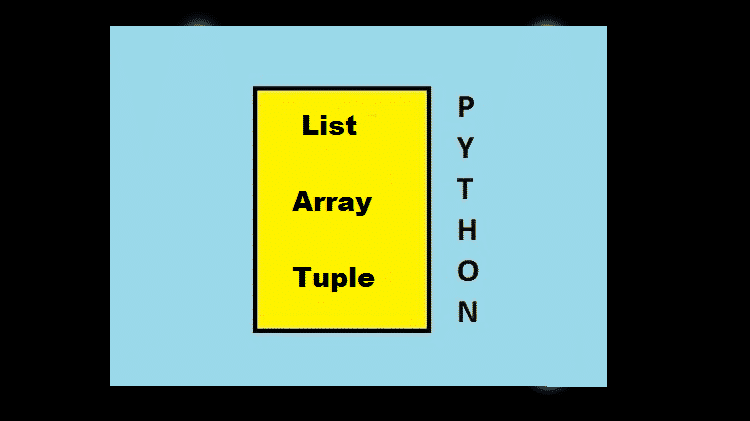In any programming language, the data structures available play an extremely important role. They decide how your data will be stored in the memory and how you can retrieve the data when required. Therefore, the entire process of memory management and processing speed of data are dependent on them. When it comes to python or any modern programming language for that matter, the three data structures stand out and widely used in small to commercial projects. They are array, list, and tuple. They may look similar to many programmers but they were created so that they can be used when they are advantageous in different scenarios. Therefore, one has to understand the differences and correct usage for efficient memory management and data processing.
Differences Between Python List, Array, and Tuple –
Array – We should always start with an array as it appeared in the programming languages earlier than the rest two. Therefore, you would expect its operation to the simple and primitive. An array is a contiguous memory allocation for data storage. The static array always has a predefined size and it is efficient for iterative works as the elements are stored side by side in the dedicated memory locations. It is not that effective when it comes to inserting a new element in between the already present elements.
Similarly, it causes inefficient memory management when you delete an element in between the elements present. Therefore, a static array is suitable only when you need to keep a series of elements side by side and you have to do iterative works through loops. In such a scenario, the memory management and data processing will be faster. If you are already running out of memory space, it can give you errors and you can lose certain elements due to out of range scenario.
To avoid the drawbacks of static arrays to a certain extent, the dynamic array was introduced and the data structures like vectors, array list and likewise fall under the dynamic array. These dynamic arrays can be resized and they can be placed in a scattered manner in the memory space as per availability.
List – The concept of the dynamic array led to list or linked list as some like to call it. As a matter of act, after the introduction of the linked list, the dynamic array data structures started to become less popular. Unlike an array, a linked list is not continuous memory allocation. It has scatted memory allocation technique. Each node of a list consists of two parts. The first part contains the data while the second part is a pointer that had the memory reference of the next node wherever it is placed in the memory. This makes the memory management efficient in all scenarios and you can add or delete nodes in a list effortlessly with extremely high processing speed. Unlike an array, a list can have heterogeneous data.
A modified version of a list is called double linked list where each node has three parts – the data, the reference of the previous node and the reference of the next node. This makes it easy to access any data with a higher speed and perform different iteration swiftly.
Tuple – Tuple is often compared with List as it looks very much like a list. A tuple is actually an object that can contain heterogeneous data. Out of all data structures, a tuple is considered to be the fastest and they consume the least amount of memory. While array and list are mutable which means you can change their data value and modify their structures, a tuple is immutable. Like a static array, a tuple is fixed in size and that is why tuples are replacing array completely as they are more efficient in all parameters. The syntaxes of each one of these data structures are different. If you have a dataset which will be assigned only once and its value should not change again, you need a tuple.
Conclusion –
The concept of array is becoming obsolete as it is a bad memory management option and there are various shortcomings in its operation that makes it have limited usage. If you really need to use a static array in your program, you should use tuple as it is better at memory management than an array and does the same job as a static array. The only thing it does not do is that it does not let you change it. This property makes your data safe.
But if changing the values and inserting new data in between already available data is required, then the linked list is the ideal choice as it manages memory and data perfectly and the execution time in big projects will come down significantly. You can perform different types of operations on a list as per your requirements.

